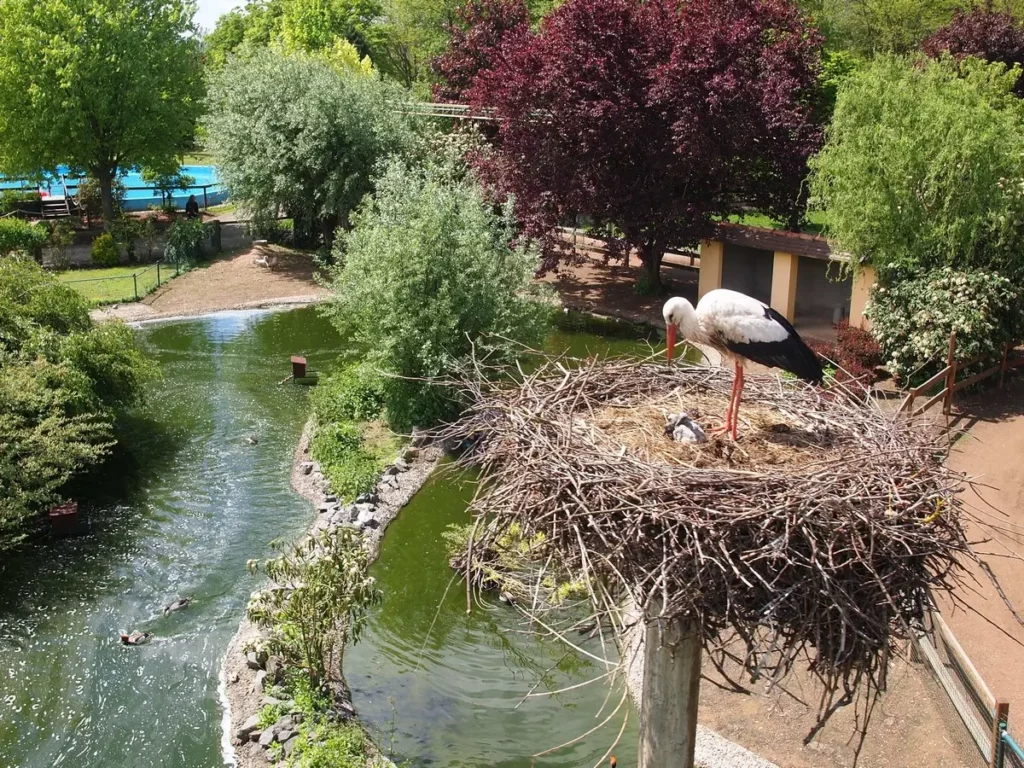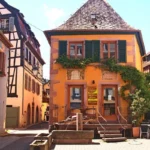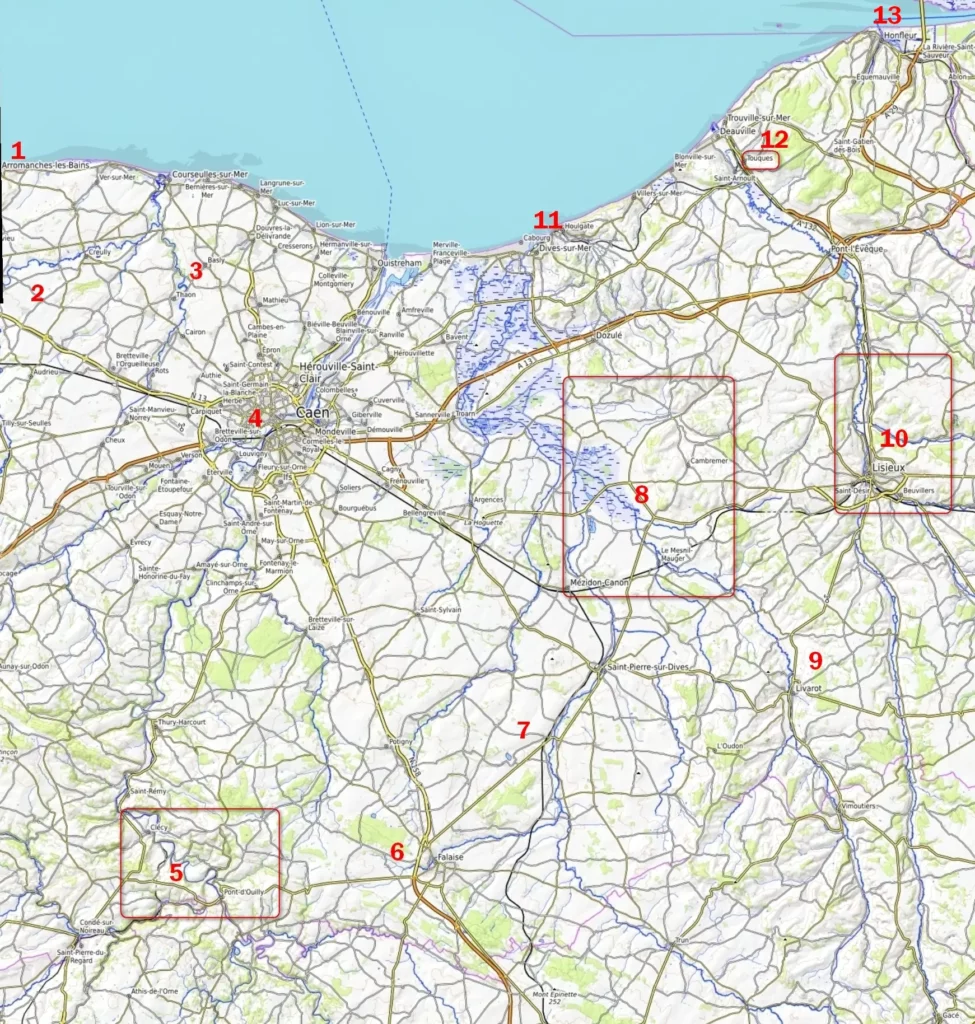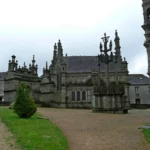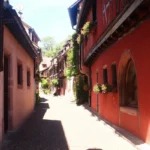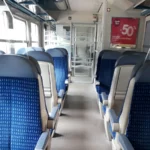Last Updated on 17/10/2023
Selestat is not as popular as Colmar and does not seem to be trying to improve this situation, although there are a number of top Alsatian attractions nearby. Koenigsbourg Castle, a park with free-roaming monkeys and a bird of prey show are on a mountain near the city. There’s also an amusement park near the highway, and Alsace vine route through beautiful half-timbered small towns. Let’s also add Strasbourg, which has good transport accessibility, and we get an almost ideal base for exploring Alsace.
Alsace public transport and welcome cards
What to see in Alsace. Alsace attractions from Selestat to Colmar
Alsace Wine Route. 1. Ribeauville, Riquewihr
Alsace Wine Route. 2. Kaysersberg and Eguisheim
Strasbourg (Strassburg). What to see
Attractions of Black Forest (Schwarzwald). 1. From Altensteig to Gengenbach
Black Forest what to see. 2. From Gengenbach to Wildkirch
What to see in Alsace. 1. Northern Alsace
How to get to Koenigsbourg castle, Cigoland and monkey mountain
Selestat has railway station. Navetta bus 500 travels from bus station to Koenigsbourg castle with stops at Cigoland, bird of prey show and monkey mountain.
Alsace public transport and welcome cards
Navetta 500 makes (according to the schedule, in reality it does not always deign) the first stop after Selestat at Cigoland (Park de cigognes), then in the town of Kintzheim, then stops at the birds of prey show. Next stop is Monkey Mountain. For both the birds and the monkeys, it has to turn off the main road, so you may get confused about where you are even going.
It is best to say at the entrance where you are going to get off to increase the chances of getting stopped, as the driver sometimes ignores the stop button and shouts.
The maps show the route to these attractions as if they were nearby. In fact, from the monkeys to the castle it is at least 5 km, and the entire route is even longer.
Parking lots at monkeys and birds are ok. At the castle it stretches along a narrow road, so many have to climb up along the road for quite a long time.
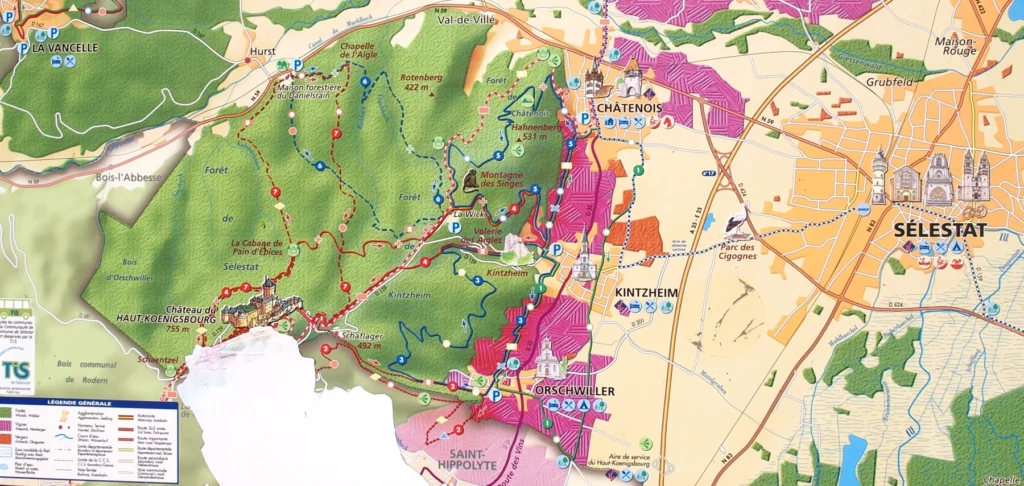
Pay attention to the distance, time and elevation difference if you plan to hike.
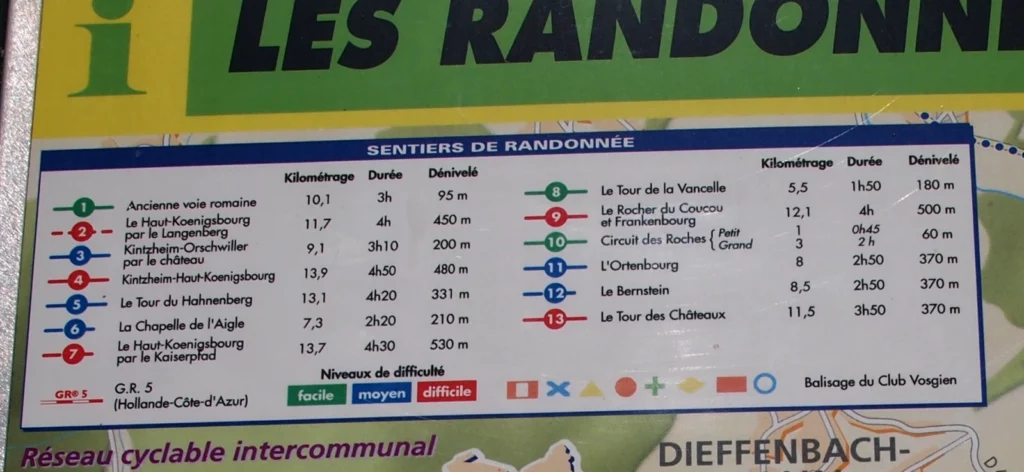
Selestat what to do
Selestat is a rural small town. A small historical center within walking distance from the station, wide streets, gardens, fruit trees, roses and everything in brownish-white tones. And for some reason there were very few people, although there were no holidays or vacations. Actually, there are not too many residents – only 20 thousand.
The history of the city began with the Palatinate – the imperial travel palace, whose finest hour was the celebration of Christmas by Emperor Charlemagne in 775.
The next period of prosperity was intellectual – in the 15th and 16th centuries the Latin School became famous here. It was in the accounts of the Humanist Library in the 16th century that the custom of using christmas trees was first recorded.
With the Reformation and the 30 Years’ War, the city’s heyday ended, and since then it has remained in the sleeping state of a small town, which you can see today.
The historical center consists of three parallel streets and adjacent lanes. The center is surrounded by a ring of boulevards. With a visit to the library and bread museum, the walk will take you no more than 2.5-3 hours.
The Humanist Library – a collection of the Latin School and donated books – is located in an old warehouse and is included in the UNESCO list.
The museum is a hall in which ancient books, mainly from the Renaissance, are exhibited. The hall has no architectural value. Those interested in history and books will be curious: how handwritten books were written, illustrations were drawn, and printing was done.
The bread museum is also very small, but you can take part in workshops.
The building housing the Humanist Library Museum is on the right.

From an architectural point of view, two churches in the city are interesting:
– the Ste-Foy church was built in the 12th-13th centuries and retained its Romanesque appearance -as is usually the case with Romanesque churches, it is very harmonious and elegant (but the inside is not very interesting)
– Church of St. George (13-15 centuries, Gothic). The outside is so-so, but inside, despite the damage of 30 years and the Second World War, stained glass windows and medieval wall paintings have been preserved.
Ste-Foy church:

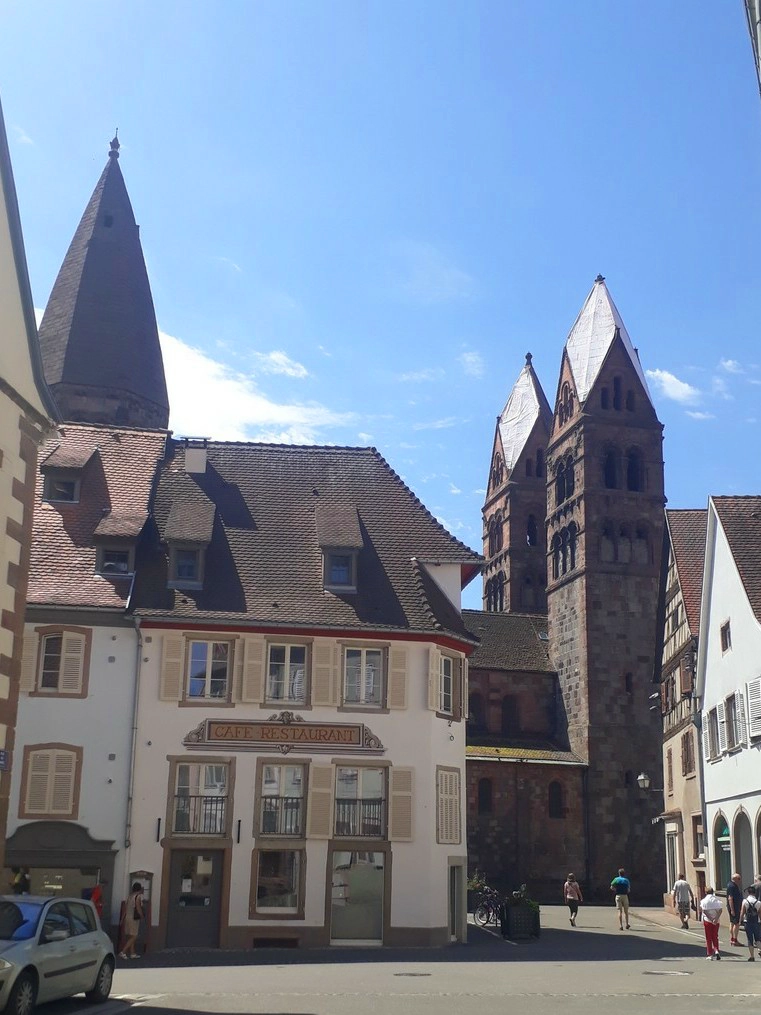
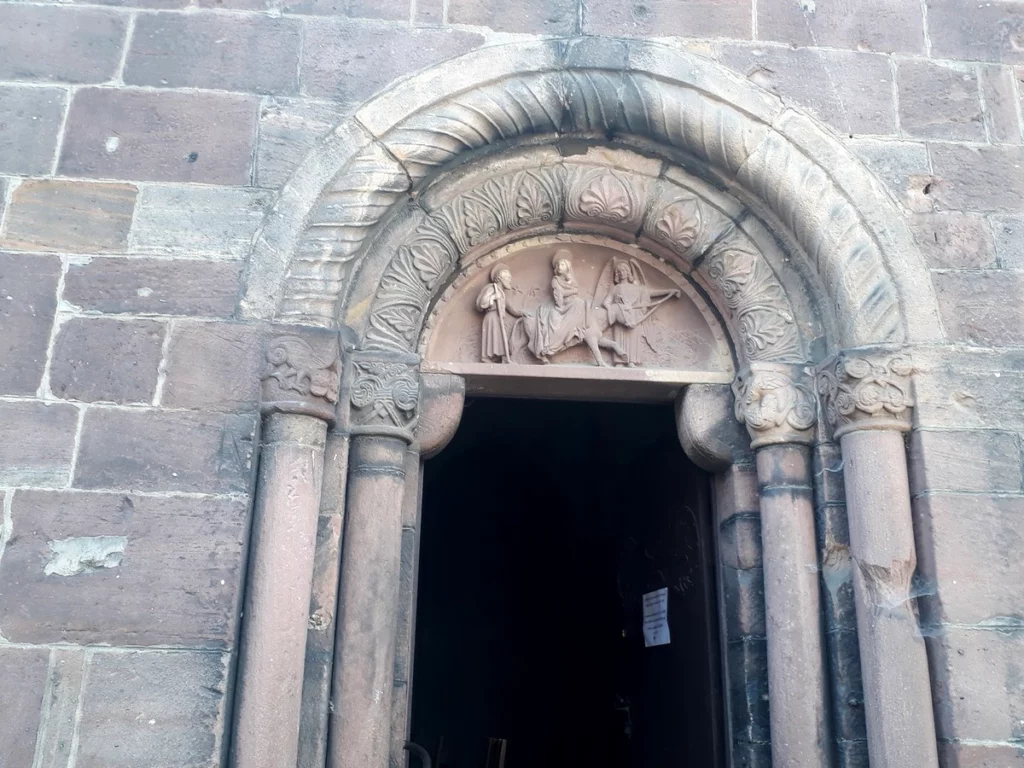

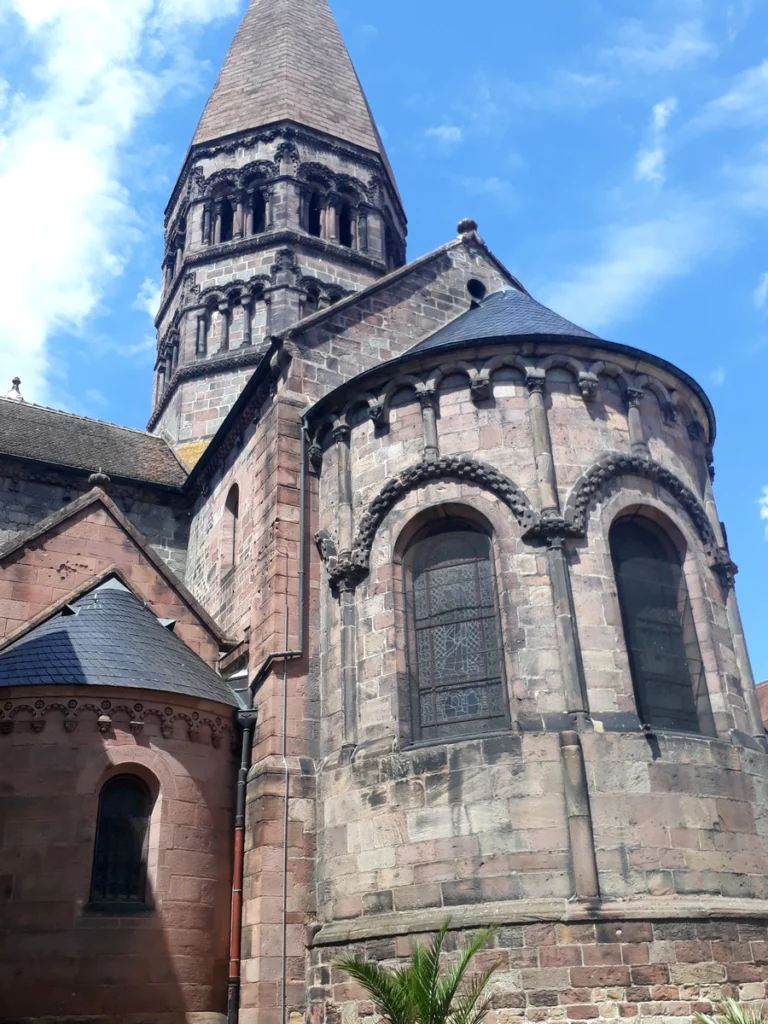
Church of St. George
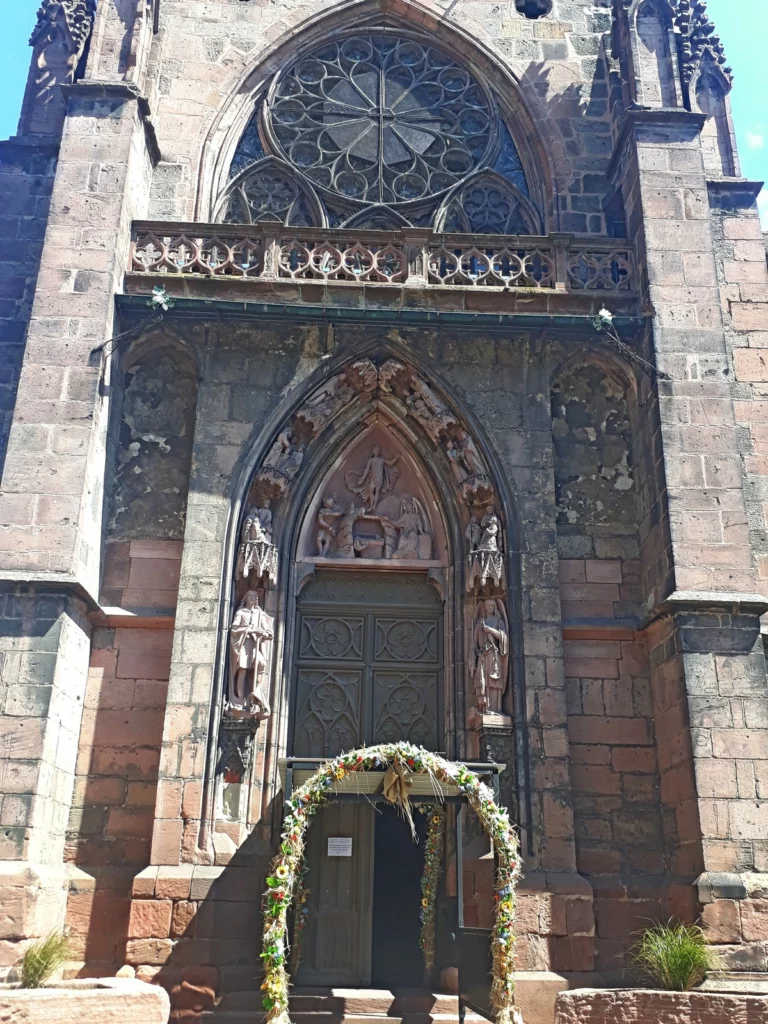

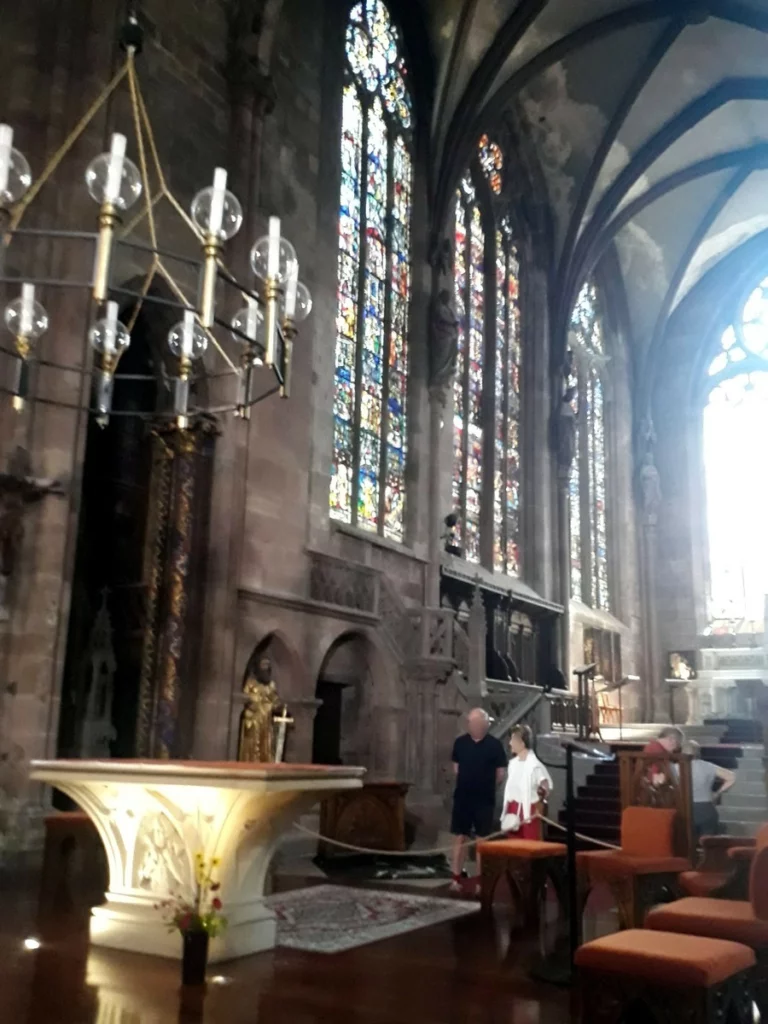
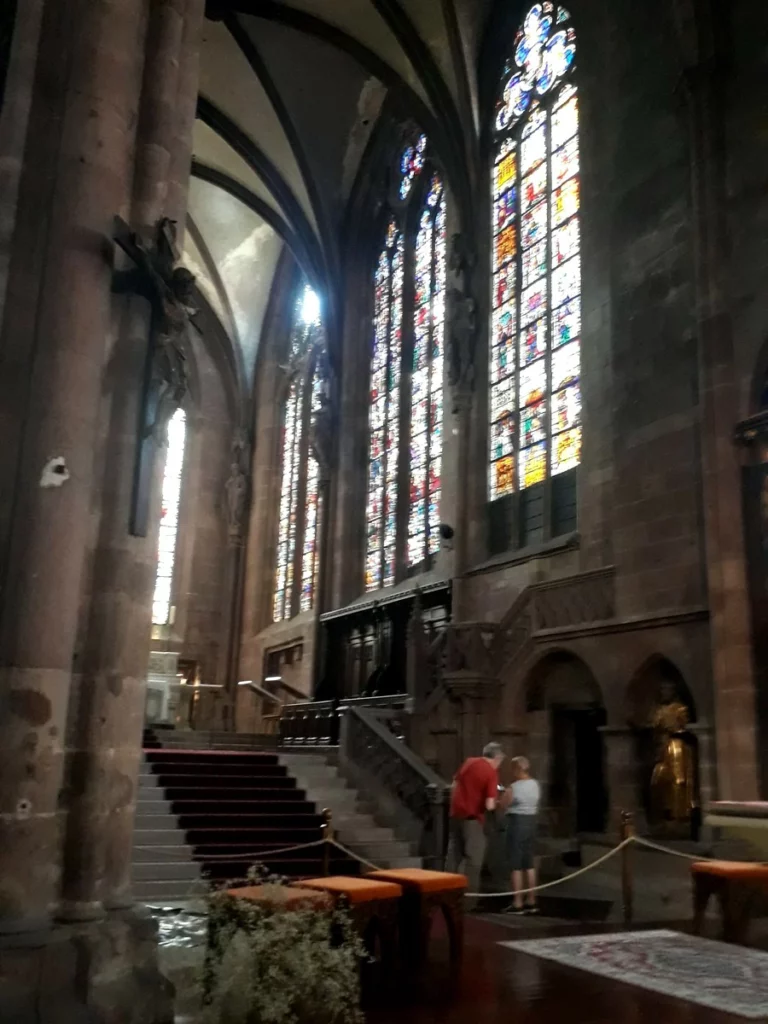
Old town hall

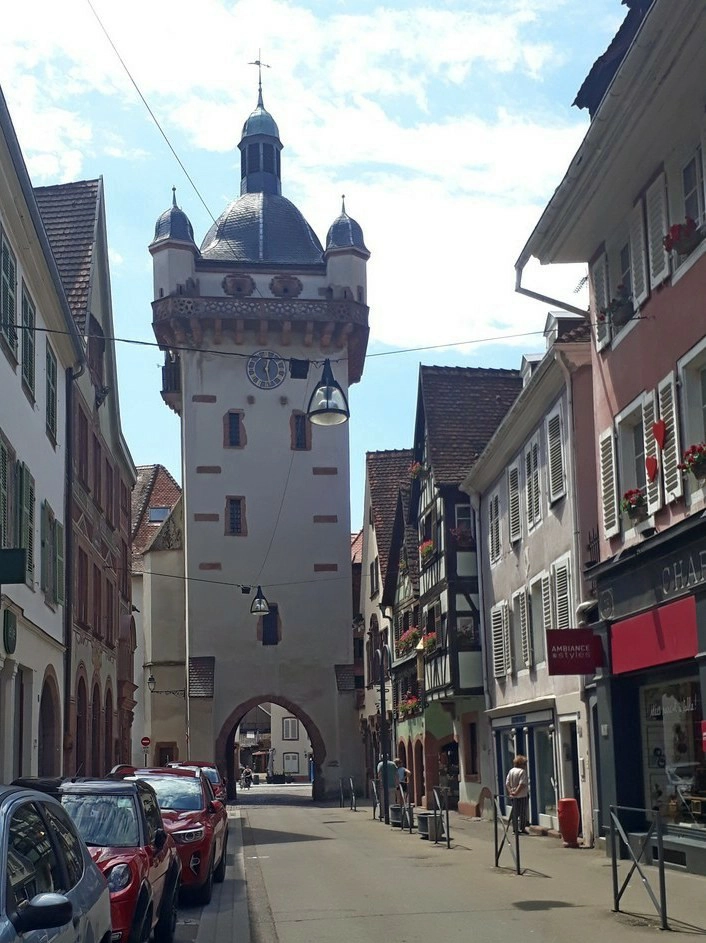

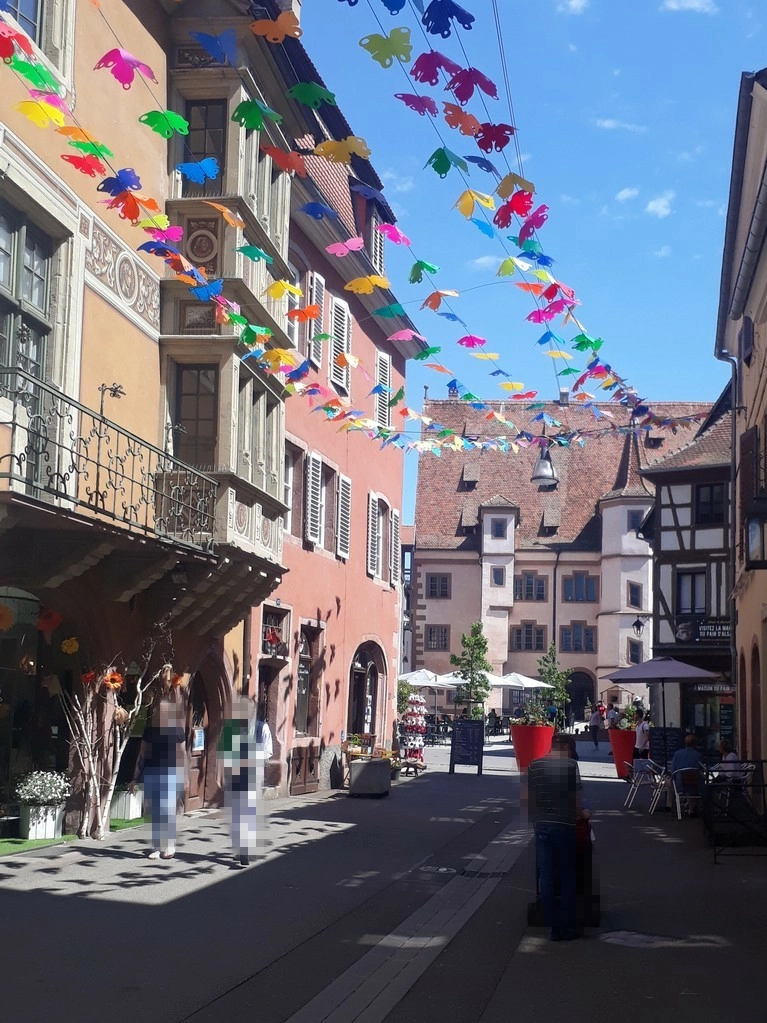

Cigoland (Park de cigognes)
Cigoland is an amusement park for ages 1 to about 10 years old. It’s worth a visit to see the storks if you have a Alsace discount card and join it with the castle and monkeys. Without a card – at will and finances. It costs quite a lot, and there are also fees for some of the entertainment inside (cars that you have to drive yourself, a circus, minigolf).
The most interesting period is spring, when you can see stork chicks on their nests. The storks are worth the cost. But in other periods – you have to think.
Guest cards and public transport in Alsace.
What pleasures are offered?
- a film with special effects about world natural attractions (a couple of times a day on schedule, we didn’t catch it),
- monorail with a view of storks’ nests from above,
- roller coaster in mini format,
- cars moving on rails in different versions,
- some water attractions for different age
- barefoot path with different surfaces (dirt, pebbles, tiles, etc.)
- train through the park,
- playgrounds, including a large splash pad (swimming things required)
- animals (storks, roosters, peacocks, some ungulates, ponies, llamas, deer, kangaroos, geese and ducks)
- film about storks.
Stork monorail is the main hit. Monorail cars in the shape of storks pass at nest level throughout the park and you can get a closer look at the birds and see the chicks. You can listen to comments along the way, but we discovered this towards the end of the trip.
An interesting point is that some attractions started working only after about an hour, that is, in the off-season you should come to the park around lunchtime.

In May:

In the second half of June. The birds have grown up.

Monkey mountain (Montagne des singes)
The park, the first of several of its kind (another, for example, on Lake Constance), was created not only for entertainment, but also to restore the population of Magot monkeys (these are those that live in northern Africa and Gibraltar).
Lake Constance map of attractions
The park made a good impression on me. I was afraid of something like a baboon paddock in a safari park, with smelly aggressive animals. But these monkeys have different behavior. They mostly search for food or groom each other in small groups. Visitors walk along a path fenced with a low barrier. In the middle of the route there are feeding sessions with a story about the animals. At the end you can watch a video with all the details.
In the middle of the day, the animals have a quiet hour, when visitors are driven outside the fence of the internal monkey domain. Behind the fence there is a cafe, a house with a video, souvenirs and a large climbing structure – an absolute hit, not inferior to the monkeys.
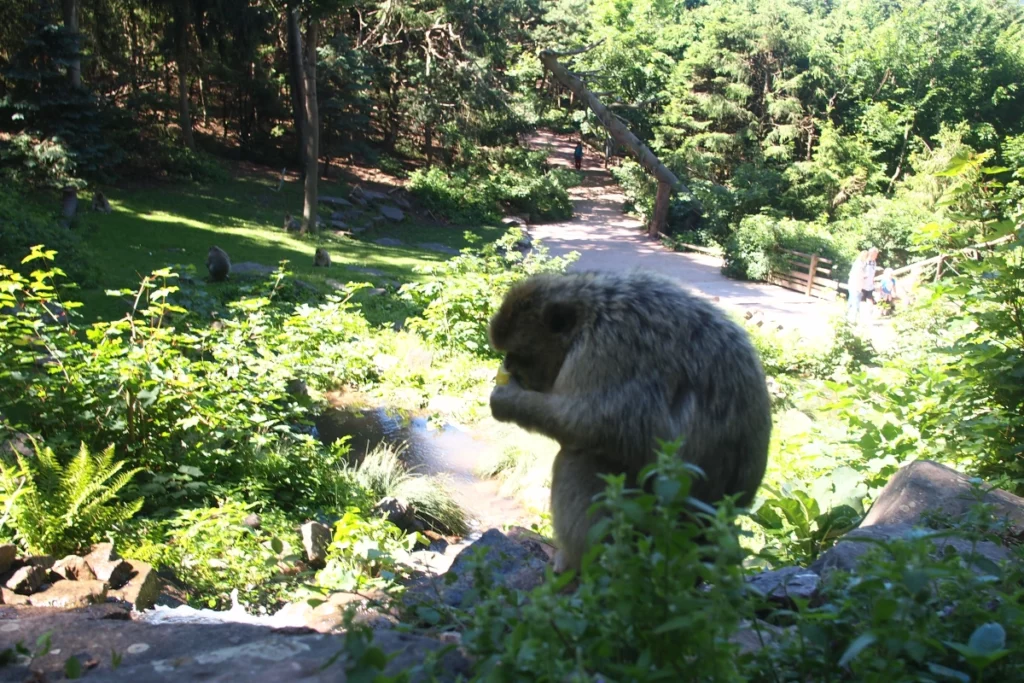
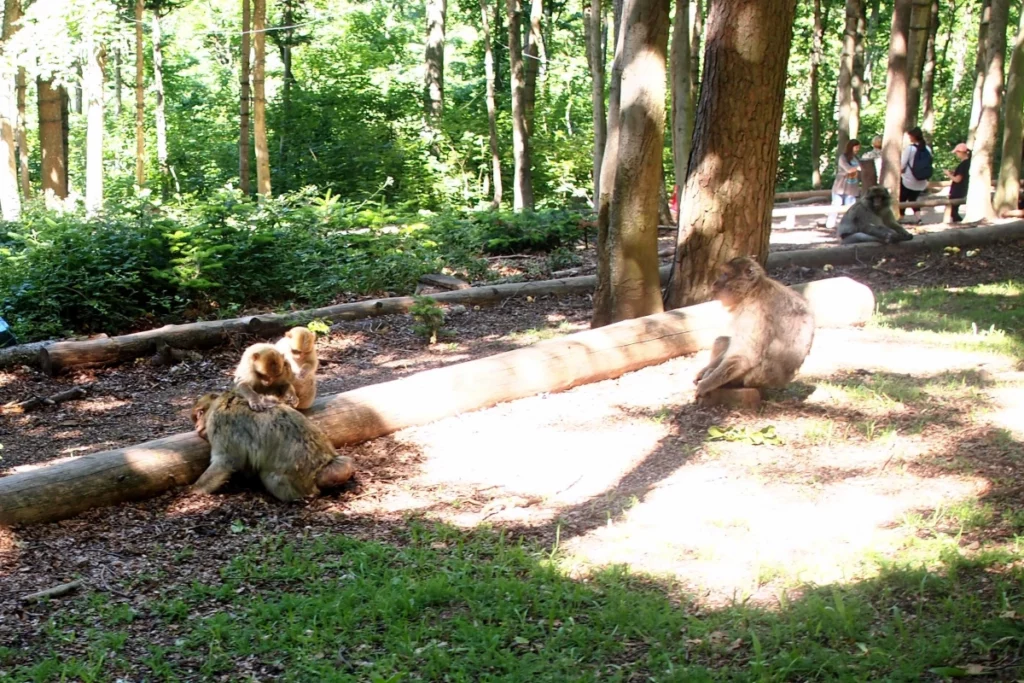
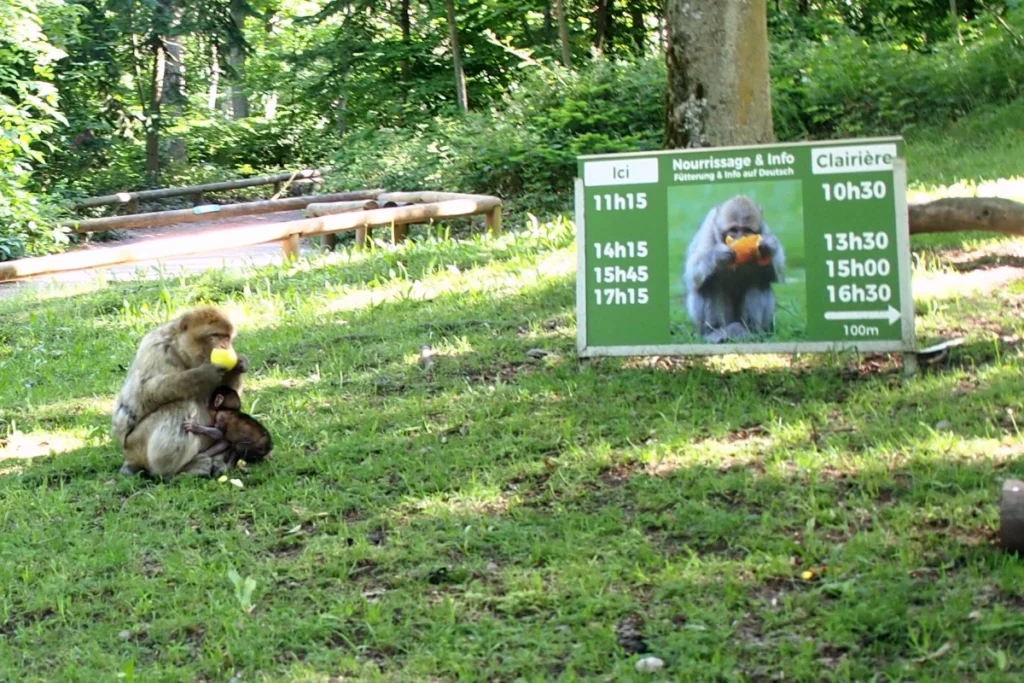
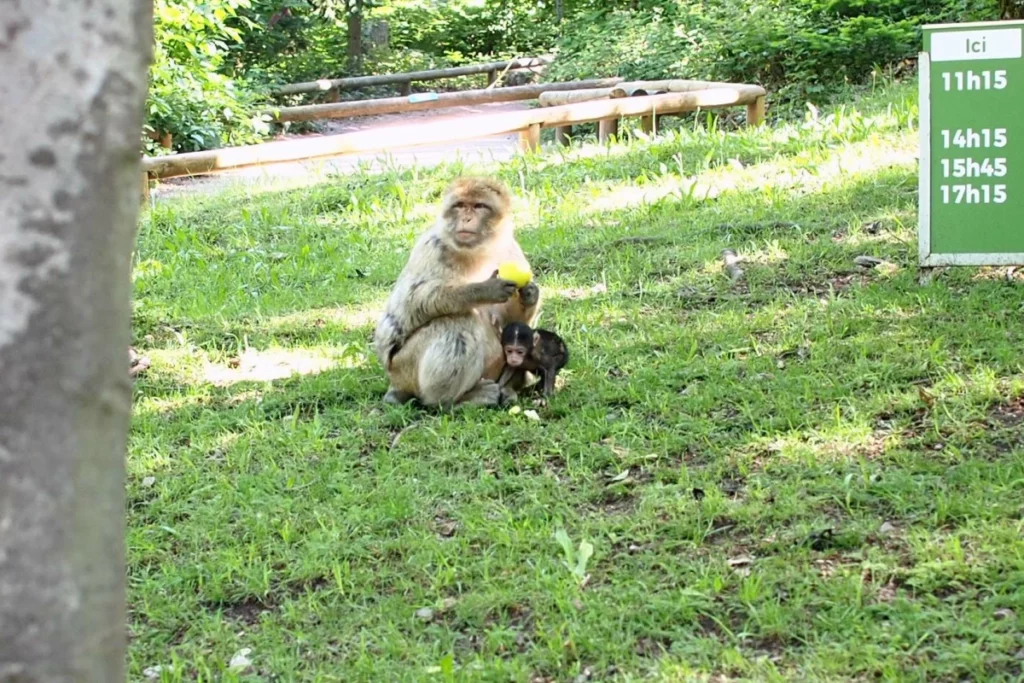
Sometimes the male patrols the territory, either quickly crossing the path, or slowly and with dignity passing by visitors.
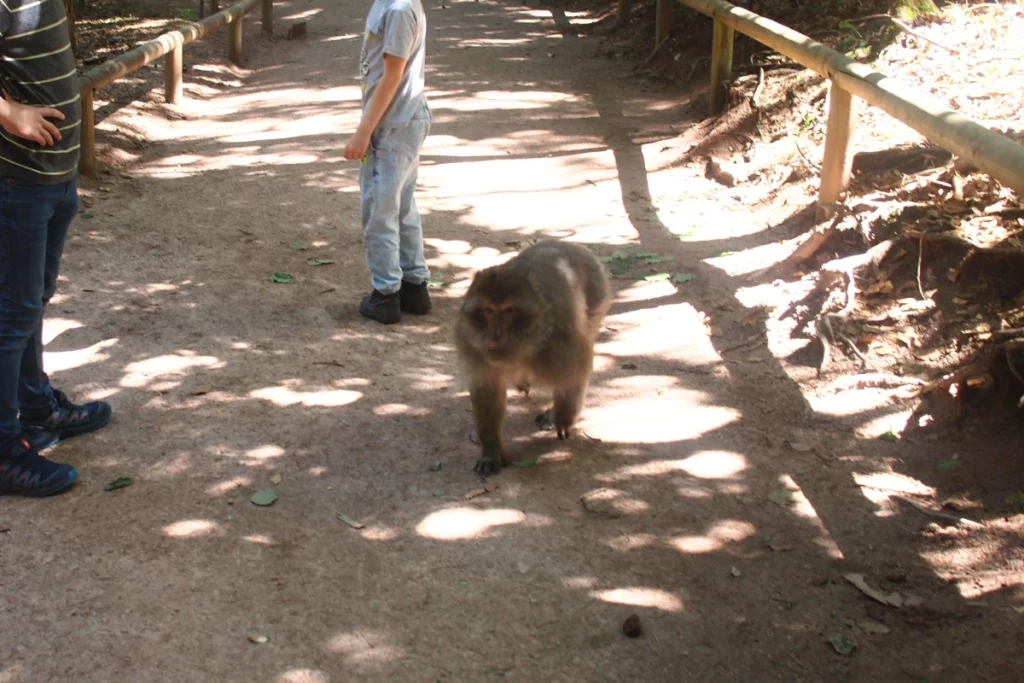
Koenigsbourg Castle (Chateau du Haut-Koenigsbourg)
Koenigsbourg Castle is a rebuilt castle, but this does not prevent it from making an impression with its size and interesting architecture. And even inside there is something to see.
The first mention of the castle dates back to the 12th century. During the Thirty Years’ War (17th century) it was plundered and then burned. At the end of the 19th century, the city donated the remaining ruins to the German Emperor Wilhelm II of Hohenzollern (Alsace had been under German rule since 1871). On behalf of William II, the castle was carefully restored. The Emperor visited the construction site every year. According to the Treaty of Versailles in 1919, the property of the German crown became the property of France.
The castle is not suitable for people with reduced mobility or wheelchairs (lots of steep stairs).

Do you enjoy the site without cookies? This means that I work for you at my own expense.
Perhaps you would like to support my work here.
Or change your cookie settings here. I don’t use personalized ads
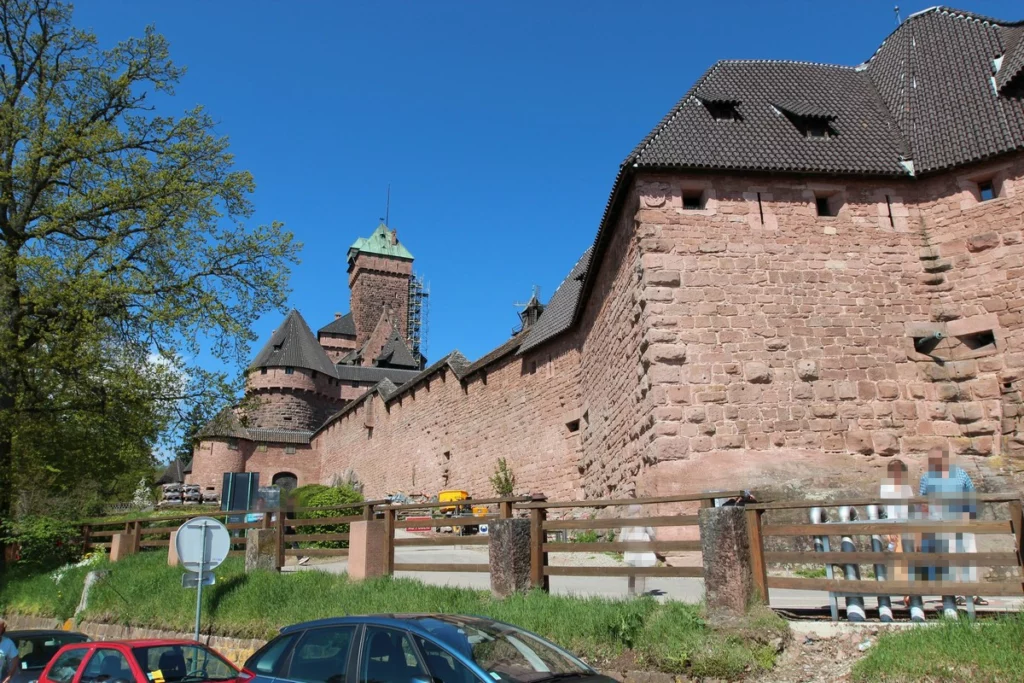
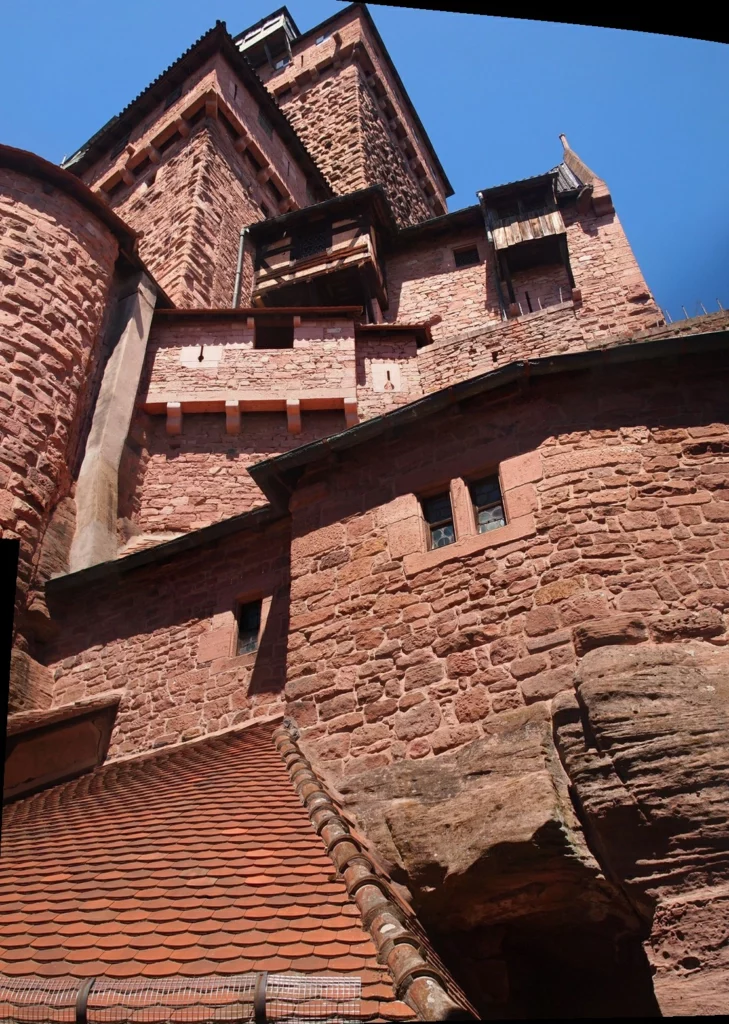
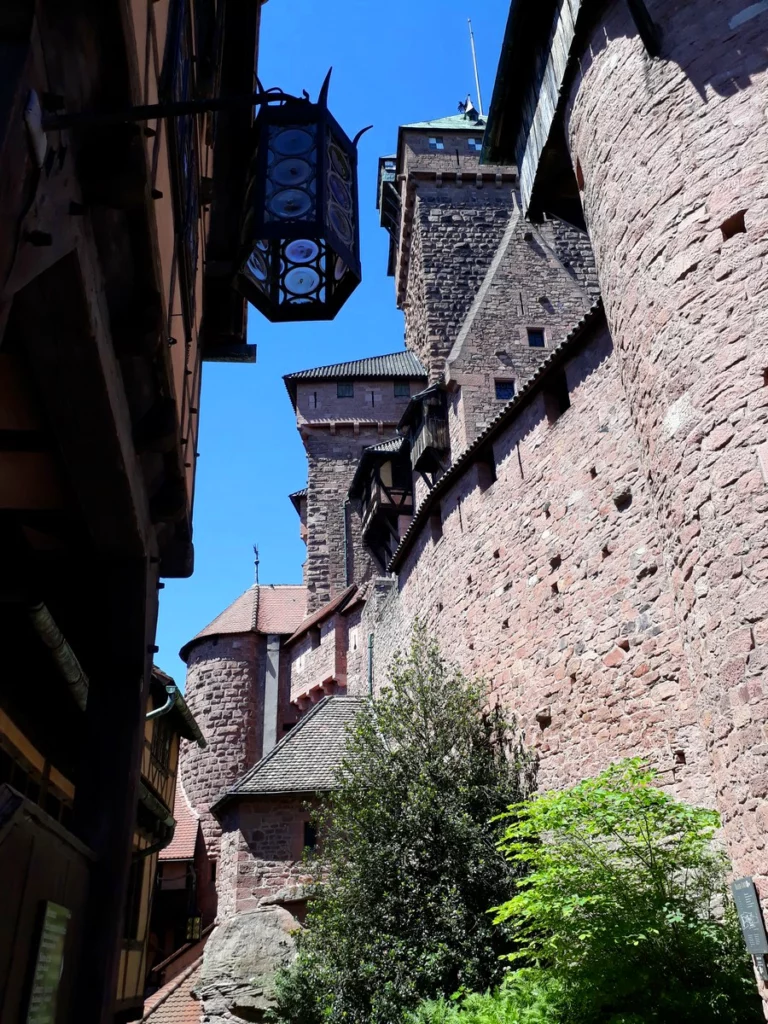




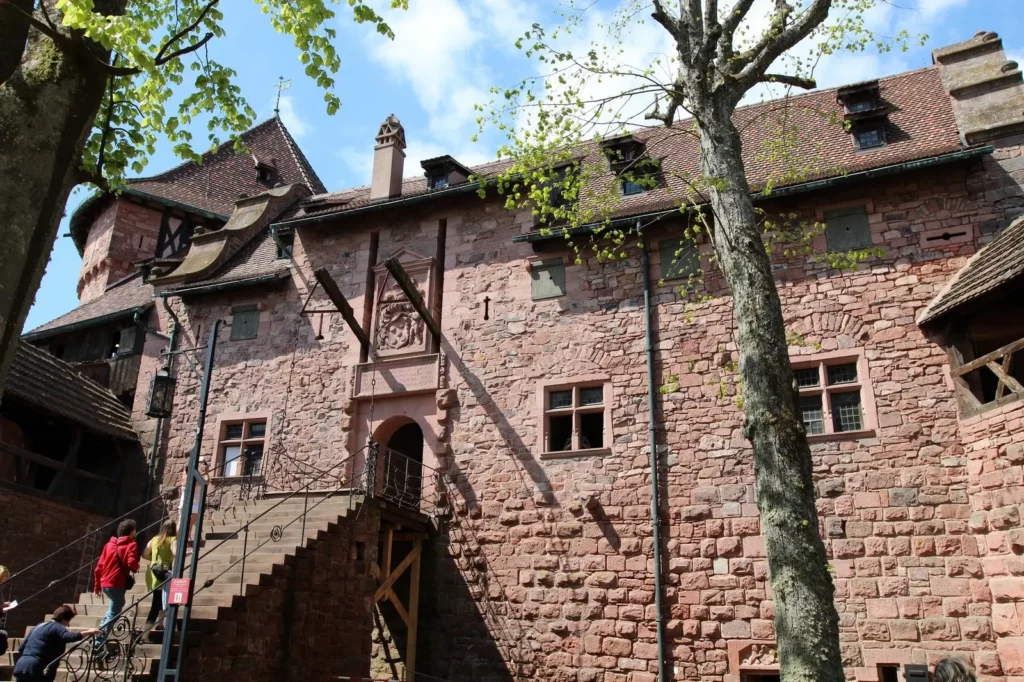
There are many rooms in the castle, but almost all of them were restored according to drawings and paintings. By the way, the castle also displays photographs of what the current buildings looked like before the restoration began.
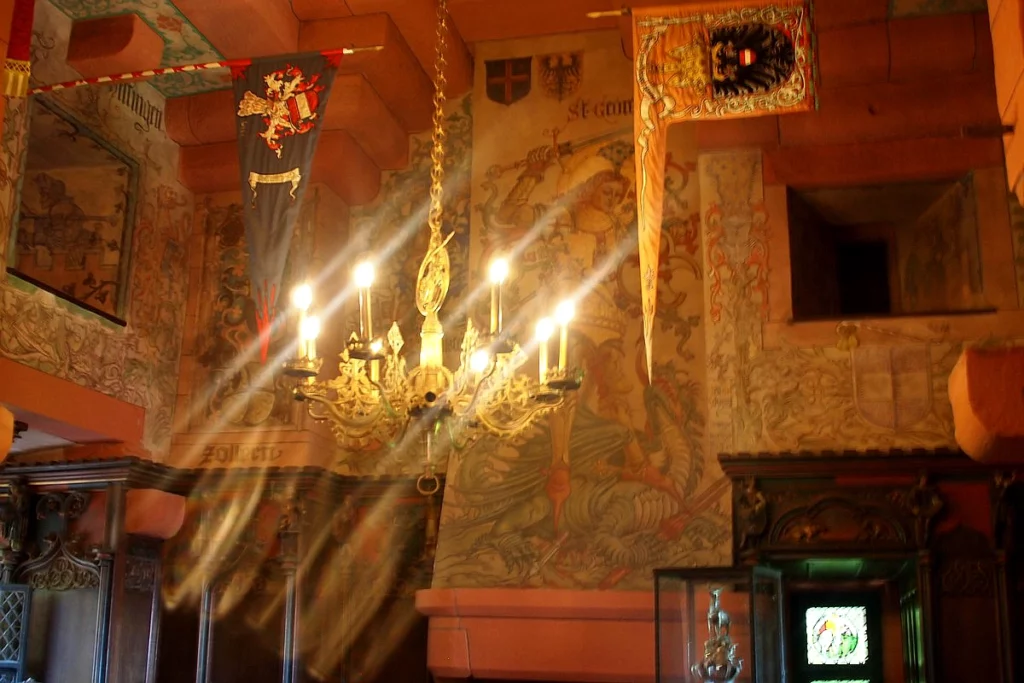

There is a collection of cannons in a large round tower.
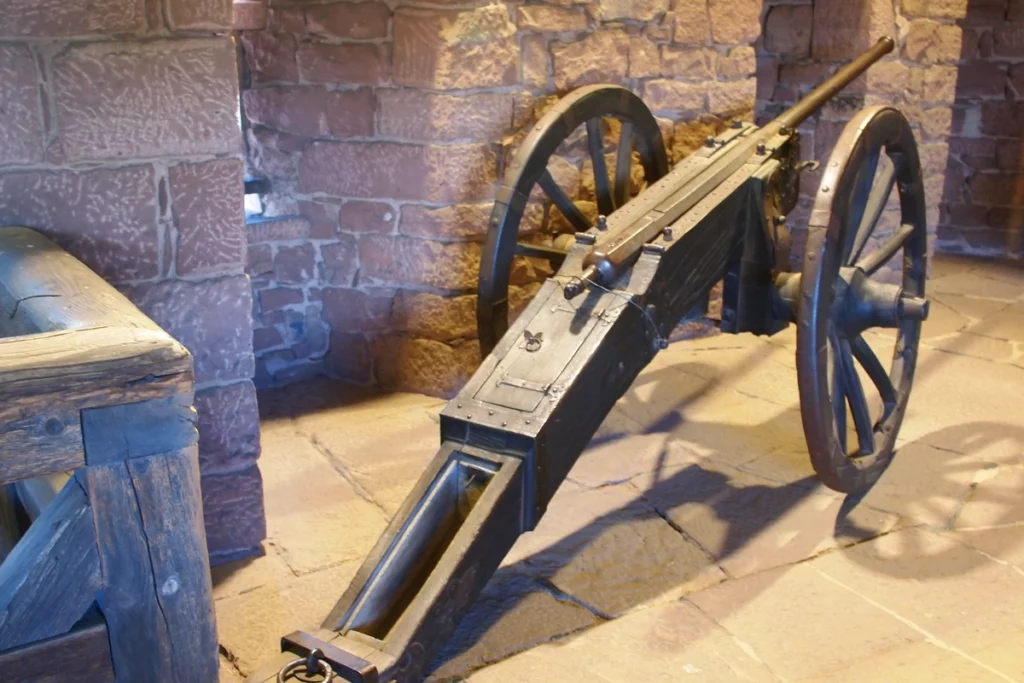
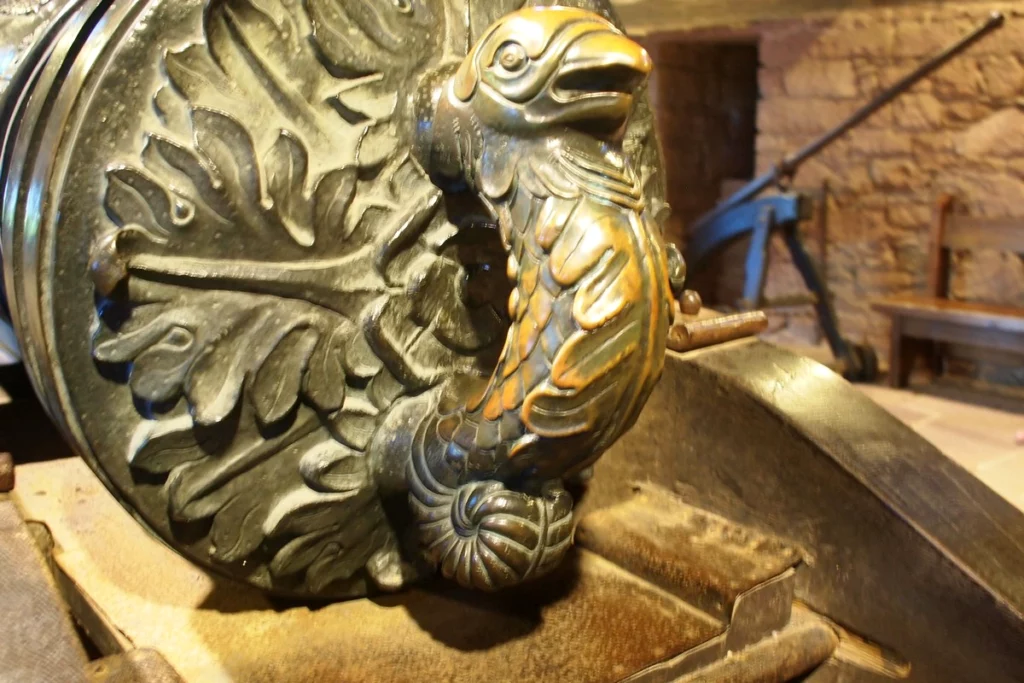
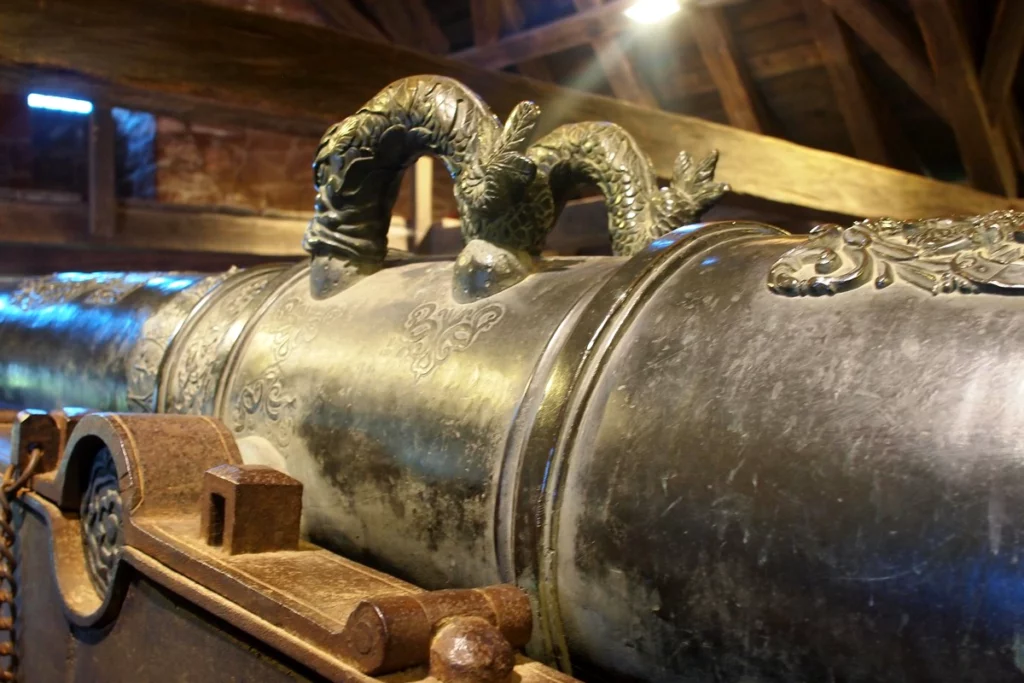
And with views of the Rhine Valley.
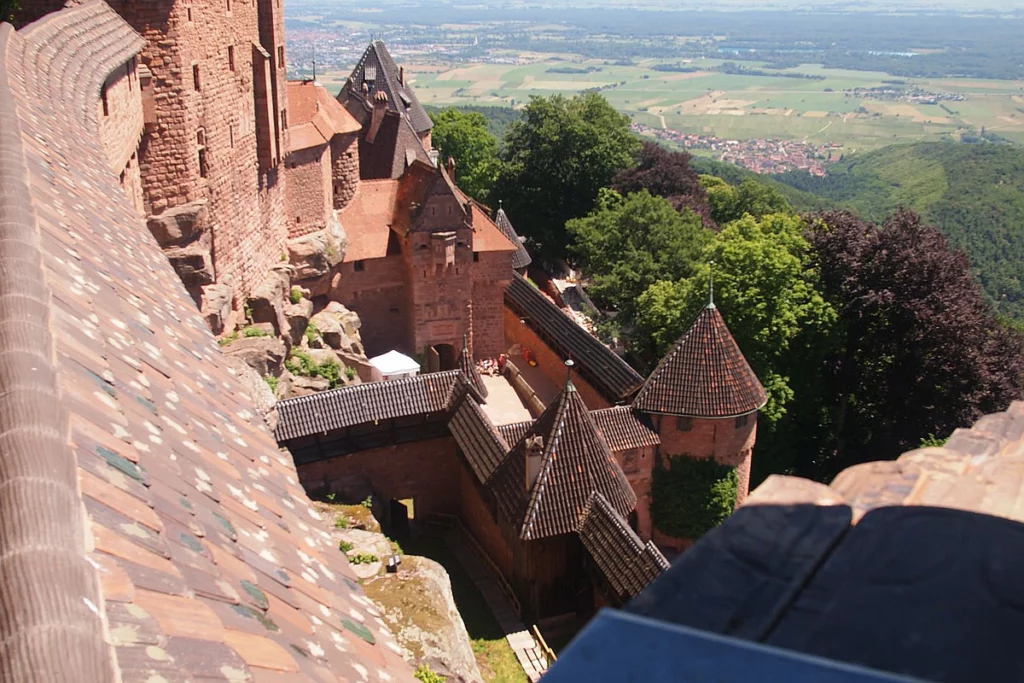
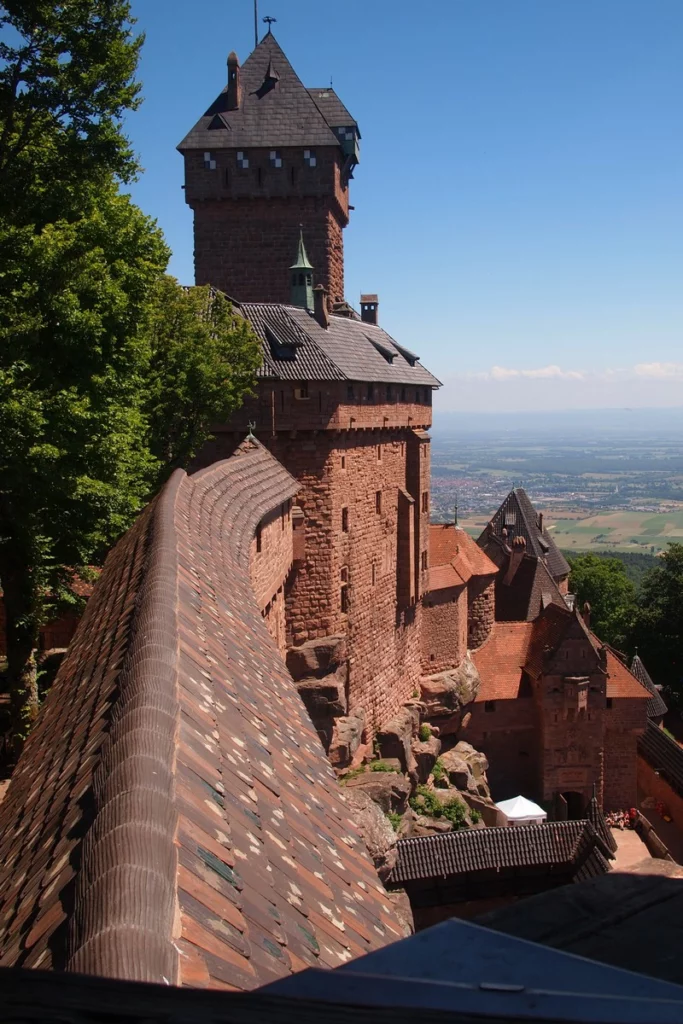
The Königstuhl (darker) is visible just beyond the Rhine and the Black Forest on the horizon.
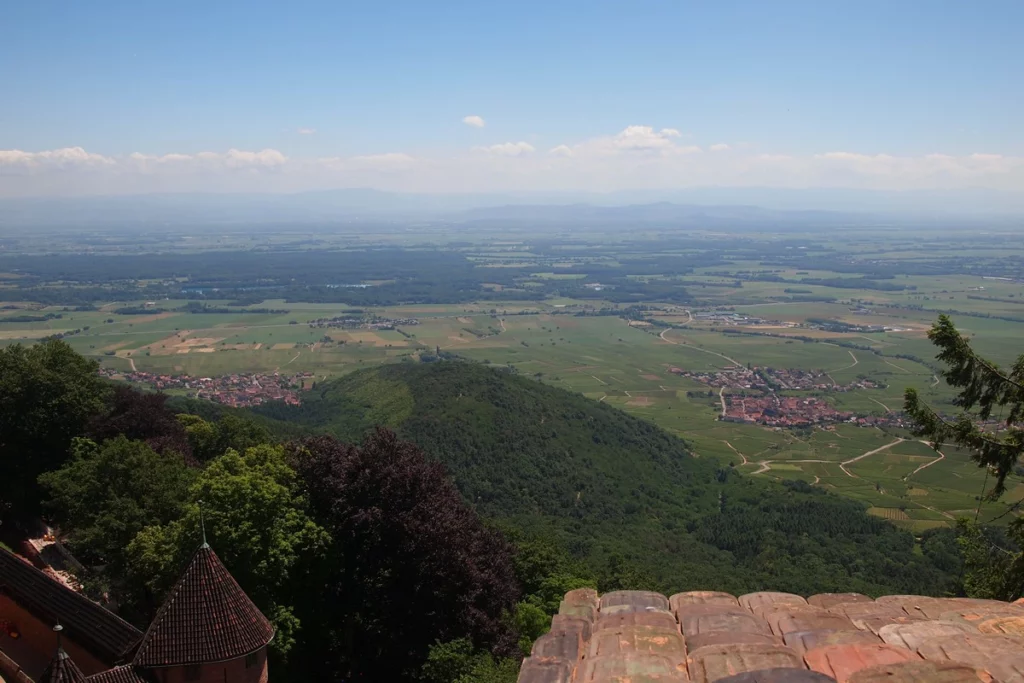
Vosges

All topics about #Alsace
What to see in Alsace. Alsace attractions from Selestat to Colmar
Alsace Wine Route. 1. Ribeauville, Riquewihr
Alsace Wine Route. 2. Kaysersberg and Eguisheim
Strasbourg (Strassburg). What to see

